Many people mistakenly think of Social Anxiety as nothing more than shyness. In this two-part series, the OCD Center of Los Angeles discusses Social Anxiety, its treatment with Cognitive Behavioral Therapy (CBT), and its relationship to other OC Spectrum Disorders.
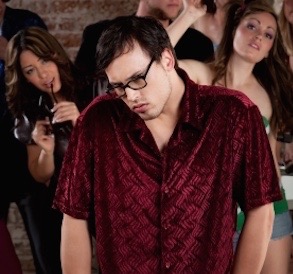
When we initially began treating people with Social Anxiety Disorder (also known as Social Phobia), it seemed that this condition was primarily a problem of interesting people not realizing that they are interesting. While this is a significant element of the disorder, there is more going on than one might initially expect.
In reality, Social Anxiety and Social Phobia are terms used to describe a cluster of symptoms that center around the fear of being negatively evaluated by others. This is often confused with being shy or introverted, or even schizoid. An introvert may genuinely prefer the quiet solitude of turning inwards to the self rather than outwards to other people, while someone with schizoid personality disorder may simply not find the presence of other people to be pleasing. In either of these cases, the experience of isolation from others is essentially rooted in ego-syntonic thoughts, which simply means that the thoughts are consistent with the individual’s true beliefs and values. In other words, those who are truly introverted or schizoid genuinely prefer to be alone.
Conversely, a person suffering from Social Anxiety is burdened by unwanted intrusive thoughts about being judged, rejected, and/or and humiliated by others.
In some cases, these thoughts may be ego-syntonic, coinciding with the individual’s distorted core belief that they genuinely deserve negative judgment. On the other hand, Social Anxiety may at times also be rooted in thoughts that are ego-dystonic, which simply means that the thoughts are inconsistent with the individual’s beliefs and values. To these people, their thoughts about negative evaluation appear strange and irrational. They don’t see themselves as being worthy of negative evaluation, yet the thought repeatedly pops up anyway.Ironically most of the people we treat with Social Anxiety are anything but shy. All it takes is a sense of safety and permission to be themselves and they are eager to be social. It is worth noting that the term “social” here does not mean casual. For many, the symptoms of Social Anxiety are equally troubling in the work environment, where fear of disapproval from someone in a position of authority or fear of disrespect from a subordinate can greatly impair functioning. It may also be prevalent in the classroom where overvalued thoughts of rejection by peers can consume daily life. So the term social applies to any environment that involves one or more other people.
Presentation Anxiety vs. Connection Anxiety
Social Anxiety seems to fall into two main categories, which can be described as Presentation Anxiety and Connection Anxiety. Presentation Anxiety focuses on an intense fear of being judged negatively while engaging in some sort of solitary interaction with a group of people. This often manifests as a fear of public speaking, but it is equally debilitating for the person who fears being negatively evaluated in a small social gathering such as a party.
Conversely, people who suffer from Connection Anxiety may or may not feel comfortable in the spotlight in a group setting, but experience far more intense discomfort in one-on-one interactions. This has unfortunate implications for establishing relationships with people in an unstructured environment. Connection Anxiety appears to be less talked about because it is common to see those with this type of anxiety actively and comfortably engaged in large social environments. But in our clinical experience, it is equally prevalent and every bit as debilitating.
Those with both forms of Social Anxiety may be adept at hiding their symptoms so long as they steer clear of their primary triggers. For example, someone with Presentation Anxiety may be a social butterfly at parties but freeze in terror at the thought of giving a best man speech or asking a question in class. Conversely, someone with Connection Anxiety may have no qualms about performing on stage, but may dread the interactions inherent in dating. This may explain why some entertainers who have spent their careers on stage or on camera (Barbra Streisand, Carly Simon, Donny Osmond, Kim Basinger, and Jane Lynch to name a few), have reported having Social Anxiety, despite their careers in the public eye.
Both Presentation and Connection Anxiety may converge in the presence of small groups. A small group has both the critical mass necessary for one to feel ganged up on or out of place, as well as the intimacy in which one might feel suffocated. This, among other reasons, is why group treatment is particularly effective for the Social Anxiety.
Social Anxiety and The Bully-in-the-Head Syndrome
While it is by no means a prerequisite for diagnosis, it does appear at least anecdotally that many sufferers of Social Anxiety have a history of being abused or bullied by others in one way or another. Because Cognitive Behavioral Therapy (CBT) generally maintains a present/future orientation, comparatively little emphasis is placed on the relationship between past experiences and the development of a current psychological condition. While the past may give us insight into how a sufferer developed faulty core beliefs about themselves, and how they learned to cope with stress, anxiety, and uncertainty, this knowledge often provides the therapist with little information that can be used to help bring about change in the present cognitions and behaviors that are causing the current symptoms.
This being said, it is difficult to ignore how often Social Anxiety sufferers report to me that they were bullied or abused before their symptoms surfaced. For many with Social Anxiety, being judged in a present-day social context means suffering traumatic emotional flashbacks. A failed attempt at eye contact or a sound that could be mistakenly interpreted as a judgmental chuckle from an audience can be experienced as a raised fist.
One way of understanding this is to consider how a person might respond to repeated bullying over time. In the early stage of bullying, a person may develop a strong fighting instinct, an assumption that all people are bullies, but that “I am king bully and you better watch out”. In fact, recent research suggests that many childhood bullies may actually have Social Anxiety Disorder. However, if bullying continues to such an extent that a person’s “fight” instinct is exhausted, the brain’s only other option is to put itself in perpetual “flight” mode. The same assumption develops, that all people are bullies, but an alternate rationale follows – “all people are threatening and stronger than me”. The bully that was on the outside is thus born on the inside.
Imagine you went to a party and the first thing that happened to you was someone walked right up to your face and said, “You look weird. Why did you come here? Everyone here is more attractive and more interesting than you. You are an eye-sore and a bore.” You might laugh at the absurdity of the situation, punch the person in the face, or get terribly offended and leave. Now imagine the same thing happens, but the person who comes up to you actually is you. This bully-in-the-head syndrome is shared by many with Social Anxiety. Since running from the party doesn’t shut the bully up, panic ensues. This is followed by intense mental ritual aimed at quieting the bully and/or escaping the unwanted thoughts and feelings that arise. In other words, leaving the party is only a preview of trying to leave the self.
The Cringe
As mentioned above, Social Anxiety involves an obsessive fear of being evaluated negatively by other people. However, this does not offer a complete picture of the Social Anxiety experience. In the course of treatment of Social Anxiety with Cognitive Behavioral Therapy (CBT), one common restructuring technique is to encourage the sufferer to rate (as a percentage score) the likelihood that a given social situation will go badly, as well as the likelihood (again, as a percentage) that they will be unable to tolerate this event occurring. This is a good way to weed out catastrophizing distortions and the areas in which a Social Anxiety sufferer may be overestimating risks.
What’s interesting about this is that we have frequently found social anxiety sufferers will initially rate these concepts very high, such as an 80% likelihood that a person will notice if they are nervous and a 90% likelihood that this will be unbearably upsetting. However, when the terms are reframed and we ask this same person if they really believe that 8 out of 10 times (80%) the feared event will occur, they are often quick to drop the estimate considerably.
On the other hand, the belief that the experience, if it were to occur, would be intolerable, remains the same. They may concur that the embarrassment is not the end of the world, and that they won’t literally die, but they will often stick to the conviction that no matter how unlikely the feared event, experiencing that event must be avoided at any cost. What this reveals is not just low self-confidence, but a fear of this specific form of discomfort. Simply put, Social Anxiety is primarily about avoiding this discomfort – “I don’t care what people think, I just don’t want to feel bad. It’s not that I know for sure what they are thinking and it’s not that their opinion really even matters. I just hate the way it feels when I even think about it!”
It is this feeling, the Cringe, the stabbing sense of shame that compels the person with Social Anxiety to engage in socially avoidant behaviors again and again. Treatment therefore relies not solely on convincing oneself that there is nothing to be afraid of, but on mastering your ability to accept and integrate this feeling as a normal, tolerable event.
In part two of this series, we examine how Cognitive Behavioral Therapy (CBT) and Mindfulness Based Cognitive Behavioral Therapy approach treatment for Social Anxiety.
•The OCD Center of Los Angeles is a private, outpatient clinic specializing in Cognitive-Behavioral Therapy (CBT) for the treatment of OCD, Social Anxiety, and related. In addition to individual therapy, the center offers six weekly therapy groups, as well as online therapy, telephone therapy, and intensive outpatient treatment. To contact the OCD Center of Los Angeles, click here.
SaveSave












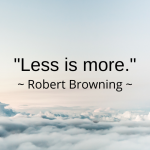

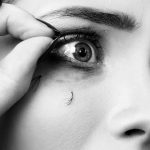



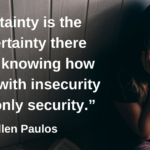

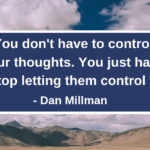






































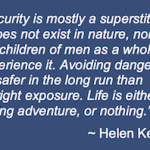
9 Comments
For years, in therapy, I’ve been using the word “discomfort” rather than “anxiety” as the main descriptor for unbearable pain that occurs in this disorder. Unfortunately, nobody knows yet how to utilize this information in order to help people like us, but it’s good to know that at least some people are beginning to study this disorder.
I am a psychology major and doing a report on different mental disorders including social anxiety this is the best page i have came across yet. Thanks for the insight keep it up
Thanks for the kind comment, Blake! Best of luck with your academic pursuits!
I think this sounds a lot like me, with the “bully in the head.” My sisters and some family members were so cruel and cutting my entire life, and still are! (and I’m 62!) that I still half-expect to be raked over the coals by everyone I come in contact with.
I am normally a very outgoing, engaging person, with a huge terror and avoidance of doing anything “publicly,” i.e. talking, presentations, theater, dance, performances of any kind because my sisters would do whatever they could to criticize and humiliate me.
They took after another relative of mine who apparently “trained them” to behave this way, and they never changed. They enjoyed it, most likely. I have only recently come to find out that my family is plagued with OCD and Borderline Personality Disorders, but I am still just plain flat-out afraid of other people. I hide it as well as I can, but I am the last one to arrive and the first one to leave if I can help it. And better yet, the one who just doesn’t go. But stays home alone feeling bad about it!
I’m going to save this article to re-read and see what I can do to begin to get rid of this “bully in the head.” I have taken up right where my family left off!
Dear Lord please show me The Way.
“The winds of grace blow all the time; all we need do is set our sails.”
And I need those sails right now!
Thanks for your comment, Catherine. The type of criticism you describe growing up often results in borderline-like symptoms. Because your emotional experience was invalidated so consistently, you end up approaching emotional expression either through outbursts or through avoidance. Operating in the middle ground and accepting the uncertainty of how this will be received is a great challenge. But with the right treatment, it is a challenge that can be met! An important part of learning to overcome this brand of social phobia is to learn to HEAR the bully without LISTENING to it… accepting that the bully voice exists, but letting it exist instead of fleeing from it.
The “bully-in-the-head syndrome” seems similar to what I call the “imaginary audience/jury” inside my head — as a symptom of OCD.
Is there also a connection between bullying (public humiliation) and onset/precipitation of OCD symptoms?
Hi Ishmael,
I agree – your term sounds very much the same. There are many similarities between OCD and Social Anxiety, and this internal critic is common to both disorders.
That said, I do not know of any research linking bullying or public humiliation directly with OCD. But I am confident that there is research showing a link between bullying and the development of anxiety and depression. And we have treated many clients for whom bullying was a significant factor in the onset of their OCD.
I seem to have taken social anxiety to a new level. I have it when I am alone. Whether at home, driving, being in a store or restaurant, or just walking, I feel like I’m being watched. I know there is no one there but the feeling is. I can’t sing, dance, or walk around the house naked. If a window blind is slightly open, I have to close it. If I do something that I feel is embarrassing I verbally berate myself. I never thought about it much until someone suggested that I should practice for a job interview in front of the mirror. My response was anxiety at th thought of it. So, they said I should do it when no one is home. This feels even more humiliating. So, what now? Are there others like me? Strangely, I am a performer. I love being on stage and interacting with the audience.
Jackie,
As our article notes, there are many performers who are far more comfortable on a stage or on camera than they are dealing with people in “real life”. After all, in real life you have to be accepted for the real you, not for your stage persona. Real life means real vulnerability.
You ask “what now”, and the answer is simple – get into treatment with a therapist who specializes in treating Social Anxiety with Cognitive Behavioral Therapy (CBT). There is no reason to continue suffering when help is available.